Herbicide Roundup - instructions for use, dosage, consumption rates
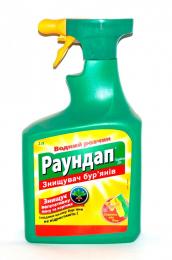
Roundup is herbicide continuous action, designed for the complete destruction of all types of weeds. The negative effect of the herbicide is aimed at weeds, without the penetration and accumulation of harmful compounds in the soil.
Content:
- What are herbicides
- Composition of Roundup
- Roundup - instructions for use, dosage
- How to properly breed Roundup
- How much product will be needed to treat the area?
- Benefits and harms from use
- Safety precautions during processing
- Reviews of the herbicide Roundup
What are herbicides
Herbicides - chemicals whose action is aimed at controlling weeds.
Depending on the nature of the action, there are:
- Absolute herbicides - continuous action, which are often used when it is necessary to completely destroy all plants. A common practice in industrial development of the area;
- Selective - selective, which are used both in large agricultural enterprises and in private gardening.
This division is conditional. So, it is important to remember that the level of action of selective agents depends on the concentration of the drug. If the permissible level of a substance is exceeded, there is a danger of destroying not only harmful plants, but also useful agricultural crops.
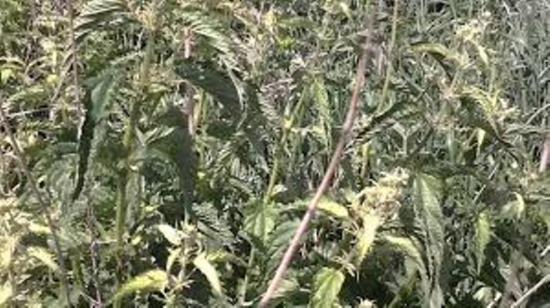
At the same time, if the dose is insufficient, the risk of developing the opposite effect - accelerating the growth of weeds - increases significantly.
Using herbicides In areas where it is important not only to take into account the rules for propagation and processing of plants, but also safety rules. Some selective drugs may cause serious irritation if they come into direct contact with the skin and mucous membranes.
Composition of Roundup
Roundup and similar substances of this series are used to eliminate weeds such as thistle, cereals and dicotyledonous, dandelion, burdock, they affect both annual and perennial weeds.
The product includes:
- Active ingredient glyphosphate - 450 g/l;
- Isopropylamine glyphosphate salt 607 g/l;
- Surfactant - 180 g/l.
Glyphosphate, as the main active ingredient, acts directly on plants. At the same time, the surfactant promotes deeper penetration into root system.
During the treatment process, the solution first hits the leaf blades and stems and only then penetrates the root. At this stage, a disruption of the processes of amino acid synthesis occurs and the subsequent death of the body.
One of the main features of the substance is the fact that its components do not accumulate in the substrate. As a result, after spraying the land, any agricultural crop can be planted.
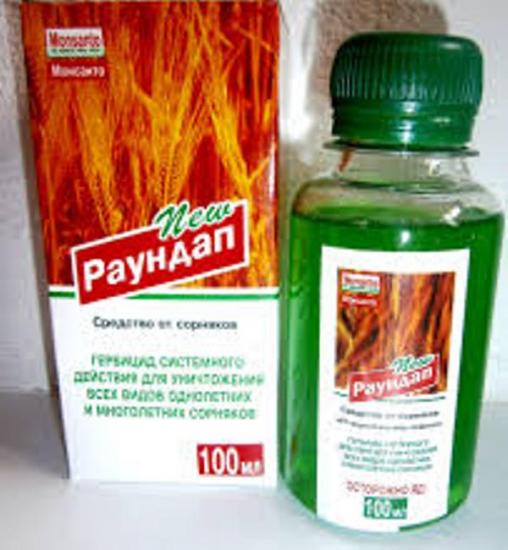
Roundup - instructions for use, dosage
Traditional treatment of soil with this substance is carried out in summer and spring, when the number of weeds increases.
For the fastest and most accurate action, it is recommended to follow all points of the instructions:
- It is recommended to dissolve the drug exclusively in clean water. Sludge impurities significantly reduce the effectiveness of the substance;
- With increased water hardness, it is recommended to increase the concentration of the mixture by 1-3%;
- When spraying, the device should be at a height of no more than 80 cm from the surface soil;
- It is better to carry out the treatment after rain has washed away the dust from the plants. This facilitates the fastest penetration of the drug into the plant. At the same time, it is important to remember that treating weeds with dew loses most of the effect. Moisture dilutes the solution, reducing its effectiveness;
- Do not spray when it is windy. The risk of the solution getting into adjacent areas increases significantly. culture;
- Although the mixture has a high level of resistance to temperature fluctuations, its effectiveness decreases in hot and frosty times.
In addition to the general instructions, before starting treatment, it is important to familiarize yourself with the dosage of the product.
When preparing the solution, it is recommended to take into account the type of weeds it is aimed at destroying:
- At the beginning of spring, when cultivating the soil, it is recommended to use 5 liters of the mixture for every 100 sq.m of soil;
- Weed sprouts that appeared before the first shoots of the main crop should be treated with a mixture of 80 ml herbicide and 10 liters of water;
- To eliminate annual parasitic plants, it is recommended to use a solution of 60 ml of the product per bucket of water. When treating perennial plants, you need to increase the concentration of the mixture several times.
When using this product, it is important to remember that when it comes into contact with a cultivated plant, it also inhibits its growth. Additionally, Roundup is not compatible with other herbicides.If the soil has been treated with this preparation, repeated treatment with another may negatively affect the condition. harvest.
How to properly breed Roundup
The optimal ratio for diluting the substance before direct use is 5 ml of the drug per 0.5 liter of water. This method is especially convenient when using the solution in ampoules.
However, if the purchased drug takes from 50 ml to 1 liter, it is recommended to dilute it in parts. In this case, you should focus on the need and size of the cultivated soil area.
It is not recommended to store the prepared solution for a long time. The mixture loses its effectiveness; it is better to treat the soil immediately after preparing the drug.
The use of a spray bottle during work and with Roundup is not recommended. Small dust particles of the mixture can fall on neighboring seedlings of agricultural crops, which negatively affects their growth and development.
A properly prepared mixture has a high level of effectiveness. Already on the tenth day, from the moment the solution enters the body, the weeds will begin to wither and completely disappear.
How much product will be needed to treat the area?
When treating areas with Roundup, it is important to consider the instructions and general safety rules.
In addition, there are a number of basic parameters that need to be taken into account before starting work:
- On a plot whose area does not exceed 200 square meters with a predominance of melons and potatoes, you will need 80 ml of the drug mixed with 10 liters of water;
- Destruction of weeds in gardens and grape areas to be produced in the same form and dosage as melons;
- Preventative measures to prevent the development of weed problems involve the use of 80 ml of herbicide diluted in a bucket of water.
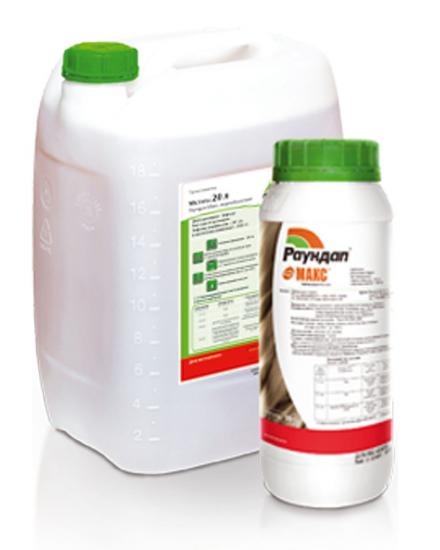
It is important to remember that the use of Roundup on or before harvest is strictly prohibited. This may negatively affect the condition of the harvested crop.
Benefits and harms from use
Roundup is a broad-spectrum drug. Approved for use in individual and farm households.
The advantages of the mixture include:
- Quickly decomposes in the soil into neutral compounds that are safe for humans and animals;
- Does not inhibit the germination of agricultural crops;
- Refers to the safest herbicides with the third hazard class;
- Precision affects weeds;
- Inhibits the growth of various types of harmful plants (monocots, dicotyledons, annuals and two-year-olds).
However, along with the beneficial properties when using this product, there are also some negative aspects.
These include:
- The active ingredient of the drug increases the level of plant susceptibility to diseases and inhibits the processes of growth and reproduction of nitrogen-fixing microbacteria;
- When the substance gets on the mucous membranes, there is an increase in pressure, a feeling of headache and nausea, disruptions in the functioning of the cardiovascular system, swelling and pain in the eyes;
- Accustoming of weeds to the drug with a subsequent decrease in the level of action;
- The constituent elements of the drug, especially glyphosphate, in their pure form are toxic to humans and animals;
- Inhibition of the vital activity of soil microorganisms, insects and worms.
Before you start using the product, it is recommended that you familiarize yourself with all its pros and cons.During the processing process, it is important to observe safety rules and follow the instructions for the preparation and dosage of the solution.
Safety precautions during processing
Despite the fact that Roundnap belongs to substances of the third class of danger, when using it it is strongly recommended not to forget about the rules of personal protection.
The main points that are important to remember include:
- It is forbidden to prepare a solution for treatment soil in food containers. Any bucket or plastic canister is suitable for this purpose. The material of the container does not matter; the product does not lose effectiveness when interacting with plastic or metal;
- If the solution accidentally spills during the preparation process, you need to thoroughly wash the floor with plenty of water;
- Direct work must be done with gloves, closed clothing and a protected head. By protecting yourself as much as possible from the danger of getting the product on your body, you can significantly reduce the risk of poisoning;
- After finishing work, you need to take off your clothes and thoroughly wash your face and hands;
- If liquid gets into your eye, rinse immediately with running water, after washing your hands;
- In case of contact with skin, immediately rinse the affected area with plenty of water;
- It is not recommended to smoke, drink or eat while working.
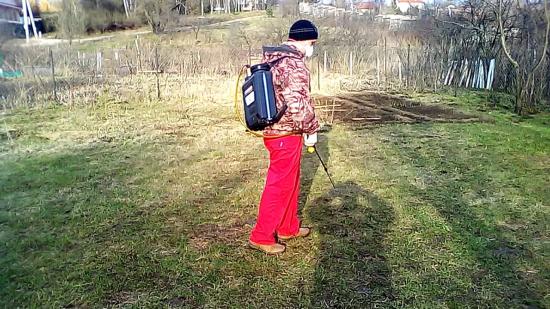
It is recommended to store the product out of the reach of animals and children, as far as possible from food and medicines.
After the drug is used, the packaging should be burned away from water bodies and residential buildings. If it is not possible to burn, the jar should be tightly closed and thrown into a household waste dump.
It is important to remember that failure to comply with safety rules has a negative impact primarily on the worker’s condition. Even if this does not help and the mixture gets on the skin, you need to wash it off as soon as possible.
Reviews of the herbicide Roundup
The high efficiency of the herbicide and its relative safety have led to the widespread use of Roundup, both on farms and private farms.
In most reviews, users note the effectiveness of the substance, active and rapid suppression of weeds.
However, along with positive ones, there are also negative ones. Thus, they note that Roundup negatively affects not only weeds, but also beneficial crops and soil microflora. In addition, there is a list of negative consequences of getting the herbicide on the skin.
However, it is worth noting that the latter is not a justified disadvantage. Roundup is a herbicide whose instructions state that it is recommended to follow safety rules when using it.
Roundup is a broad-spectrum herbicide that is aimed at inhibiting the activity of weeds.
It is used both in private gardening and farming. With a number of disadvantages, it is characterized by high speed and accuracy of impact on weeds.
More detailed information on the correct use of herbicides is in the video:


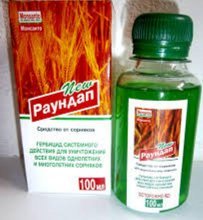
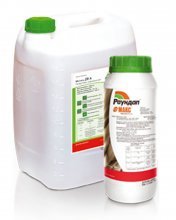
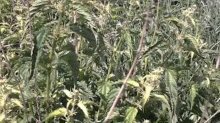
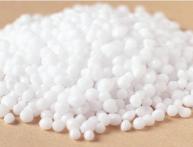

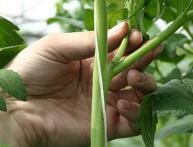
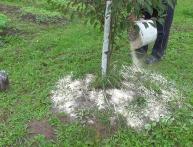
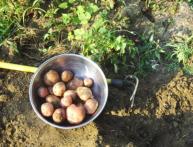

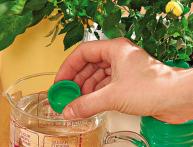

Comments
Roundup works very well against weeds, but I don’t recommend overusing it, since herbicides accumulate in the body very strongly and have a very bad effect on health.